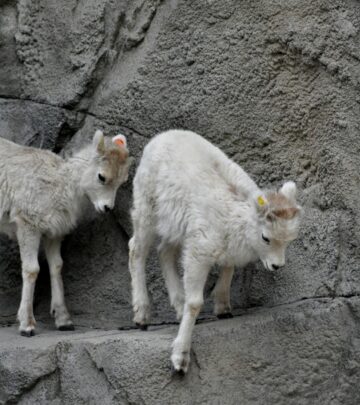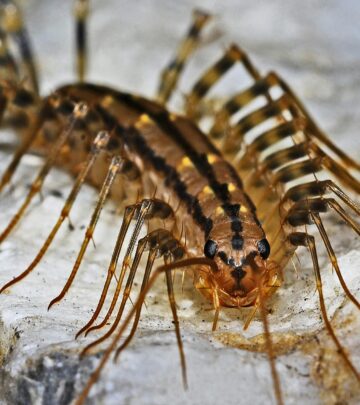What to Do When Your Hamster Has Babies: A Complete Guide
Essential care tips for hamster mothers and their newborn pups to ensure healthy development

Finding out your hamster is pregnant or has unexpectedly given birth can be both exciting and overwhelming. Whether the pregnancy was planned or a surprise, knowing how to properly care for the mother and her babies is crucial for their health and survival. This comprehensive guide will walk you through everything you need to know about caring for a pregnant hamster and her newborn pups, from pregnancy signs through the weaning process.
Recognizing Hamster Pregnancy
Before you can properly care for a pregnant hamster, you need to know if your hamster is actually expecting. There are several telltale signs that indicate your hamster might be pregnant:
- Pear-shaped body: A pregnant hamster will develop a distinctive pear-shaped appearance as her abdomen grows, along with noticeable weight gain.
- Visible nipples: The nipples of a pregnant hamster become more prominent and easier to see through her fur.
- Nest building: Your hamster may begin gathering bedding materials and building an elaborate nest in preparation for her babies.
- Increased food hoarding: Pregnant hamsters often collect and store more food than usual.
- Behavioral changes: Some hamsters become more aggressive or territorial during pregnancy, which is a natural maternal instinct to protect their young.
Pregnancy Duration in Different Hamster Breeds
The gestation period varies depending on the hamster breed:
| Hamster Breed | Gestation Period |
|---|---|
| Syrian Hamsters | 16 days |
| Chinese and Russian Dwarf Hamsters | 18-21 days |
| Roborovski Hamsters | Approximately 30 days |
Caring for a Pregnant Hamster
Proper Nutrition During Pregnancy
Nutrition is especially important during your hamster’s pregnancy. As soon as you notice your hamster is pregnant, you should adjust her diet to support both her health and the development of her babies:
- Provide a high-quality hamster diet rich in protein throughout the pregnancy and until the babies are weaned.
- Supplement the regular diet with small amounts of protein-rich foods such as:
- Hard-boiled eggs
- Small bits of cooked chicken (unseasoned)
- Cheese in moderation
- Wheat germ
- Fresh greens like malunggay leaves (if available)
- Ensure fresh, clean water is always available, as pregnant hamsters often drink more than usual.
- Be careful not to overfeed protein, as too much can make birthing difficult.
Preparing the Cage for Birth
Creating a comfortable and safe environment for the mother and her upcoming litter is essential. Here’s how to prepare the cage:
- Clean the cage thoroughly at least 5 days before the expected due date. This gives the mother time to settle in without stress just before giving birth.
- Keep a small portion of the old bedding to maintain familiar scents and reduce stress.
- Add extra nesting materials such as unscented toilet paper, paper towels, or additional bedding to help the mother build her nest.
- Remove potential hazards like exercise wheels, toys, sand baths, and complex climbing structures that could injure newborn pups.
- Place the cage in a quiet area away from loud noises, other pets, and excessive activity.
Separating Hamsters
If your pregnant hamster shares her living space with other hamsters, separation is necessary:
- Remove any male hamsters immediately to prevent fighting and additional pregnancies.
- Separate the pregnant hamster from all cage mates, even females, as hamsters can become territorial during pregnancy and after giving birth.
- Provide the pregnant hamster with her own cage with all necessary supplies including food, water, and nesting materials.
The Birth Process
Most hamster births occur without complications, and the mother hamster will handle everything instinctively. Here’s what you should know about the birthing process:
Signs of Labor
A hamster in labor may show these signs:
- Restlessness and increased activity
- Frequent cleaning of the genital area
- Visible contractions
- Retreating to the nest
During Birth
The most important thing you can do during your hamster’s labor is to leave her alone. Hamsters are private animals and may become stressed if observed during birth, which could lead to complications or even cause the mother to harm her babies. Stay away from the cage except for necessary food and water refills, and keep the room quiet.
Potential Complications
While most hamster births proceed normally, be aware of these warning signs that may indicate complications requiring immediate veterinary attention:
- Labor lasting more than 2-3 hours without producing babies
- Visible distress, excessive bleeding, or weakness
- Mother appears to be struggling or in pain
Caring for Mother and Babies After Birth
The First Week: Minimal Interference
The first week after birth is critical, and your main role is to provide food, water, and privacy:
- Do not handle the babies for at least 7 days after birth.
- Avoid getting your scent on the pups, as this may confuse the mother and cause her to reject them.
- If a baby hamster is found outside the nest, do not use your bare hands to return it. Instead, use a clean spoon to gently scoop it up and place it back in the nest.
- Make cage maintenance as quick and stress-free as possible.
- Speak quietly when near the cage and avoid prolonged observation, which may stress the mother.
Supporting the Nursing Mother
A nursing hamster needs extra nutritional support to produce enough milk for her litter:
- Continue providing high-protein foods such as hard-boiled eggs and cooked chicken.
- Ensure the water bottle is always full and easily accessible.
- Spot clean only very soiled areas of the cage, leaving the nest completely undisturbed.
- Be patient with any territorial behavior, as this is normal for a mother protecting her young.
Development of Baby Hamsters
Baby hamsters develop quickly, and understanding their growth timeline helps you provide appropriate care:
Week 1 (Days 1-7)
Newborn hamsters are:
- Pink, hairless, and blind
- Completely dependent on their mother
- Growing rapidly, often doubling in size
Week 2 (Days 8-14)
- Fur begins to grow
- Eyes may begin to open toward the end of this period
- Pups become more mobile
- May begin to nibble on solid foods while still nursing
Week 3 (Days 15-21)
- Eyes fully open
- Full coat of fur developed
- Beginning to explore outside the nest
- Eating solid foods regularly
- Still nursing but becoming more independent
Week 4 (Days 22-28)
- Weaning process completes
- Eating adult hamster food
- Ready to be separated from the mother
- Showing individual personalities
Weaning and Separation
Proper timing of weaning and separation is crucial for the health and social development of the young hamsters:
When to Separate
- Syrian hamsters should be separated by gender at 4 weeks of age to prevent fighting and unwanted breeding.
- Dwarf hamsters may need to be separated between 4-5 weeks, depending on how well they get along.
- Males should be housed separately, while females can sometimes live together if introduced at a young age (though this varies by species).
Preparing for Separation
Before separating the young hamsters:
- Ensure each new cage is fully equipped with food, water, bedding, and hiding places.
- Begin handling the young hamsters gently for short periods starting around 2 weeks of age to socialize them.
- Observe the litter for any signs of early aggression, which may necessitate earlier separation.
Special Circumstances
Orphaned Babies
If the mother hamster dies or abandons her babies, you’ll need to hand-rear them, though this is challenging:
- Use kitten milk replacer (KMR) or Esbilac (puppy milk replacer) diluted according to package instructions.
- Feed every 1-2 hours using a small paintbrush or clean makeup sponge.
- After feeding, gently stimulate the genital area with a warm, damp cotton ball to encourage elimination.
- Keep orphaned babies warm using a heating pad set on low, placed under half of their container.
Rejected Babies
Sometimes a mother hamster may reject one or more of her babies. This can happen if:
- The baby has a health issue or deformity
- The litter is very large and she cannot care for all pups
- The mother is inexperienced or stressed
If you notice a baby consistently outside the nest or appearing neglected, you may need to intervene with hand-feeding as described above.
Preventing Future Pregnancies
If your hamster’s pregnancy was unplanned, take these steps to prevent future litters:
- Permanently separate males and females, ensuring they have no contact.
- Double-check the gender of all hamsters, as young hamsters can be difficult to sex accurately.
- Keep hamsters in secure cages with no possibility of escape, as hamsters from different cages have been known to find each other.
- Consider keeping only same-sex groups or single hamsters if breeding is not intended.
Frequently Asked Questions (FAQs)
Q: How many babies do hamsters usually have?
A: Syrian hamsters typically have 6-12 pups per litter, while dwarf species usually have 4-6. However, litters can range from as few as 1 to as many as 20 in rare cases.
Q: Can I touch the baby hamsters?
A: It’s best not to handle baby hamsters until they’re at least 7 days old. Even then, handling should be minimal until they’re 2 weeks old, when you can begin gentle socialization.
Q: What should I do if the mother seems aggressive?
A: Aggression is normal maternal behavior. Give her space, minimize cage maintenance, and approach slowly when you need to refill food or water. The behavior should diminish as the pups grow.
Q: When can baby hamsters eat solid food?
A: Baby hamsters begin nibbling solid food at about 10-14 days but will continue nursing until fully weaned at 3-4 weeks of age.
Q: How do I know if the mother hamster needs help giving birth?
A: If labor lasts more than 2-3 hours without producing babies, if there’s excessive bleeding, or if the mother appears in distress, seek immediate veterinary care.
Taking care of a hamster mother and her babies can be a rewarding experience when done correctly. By providing proper nutrition, a comfortable environment, and respecting the mother’s need for privacy, you’ll give the new hamster family the best chance for a healthy start in life.
References
- https://www.thesprucepets.com/what-should-you-do-if-your-hamster-has-babies-1238930
- https://ontariohamsters.ca/education/pregnancy-crash-course.html
- https://www.merckvetmanual.com/all-other-pets/hamsters/breeding-and-reproduction-of-hamsters
- https://allcritterspetcare.com/how-to-properly-care-for-baby-hamsters/
- https://philippinehamsterkeepers.com/hamster-care/pregnancy-crash-course/
Read full bio of Shinta





















Community Experiences
Join the conversation and become a part of our empowering community! Share your stories, experiences, and insights to connect with other beauty, lifestyle, and health enthusiasts.